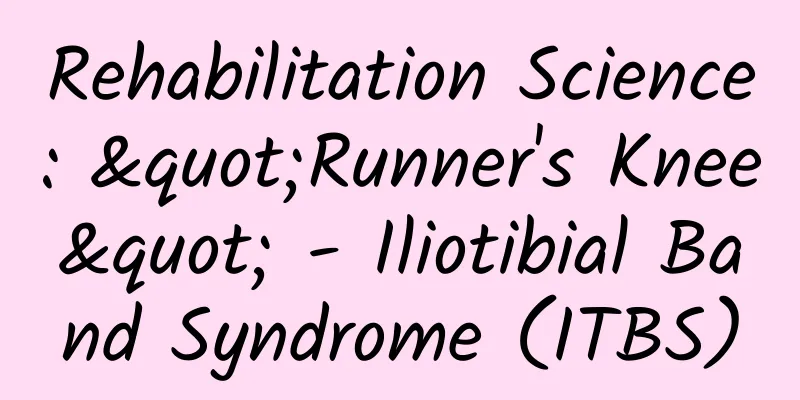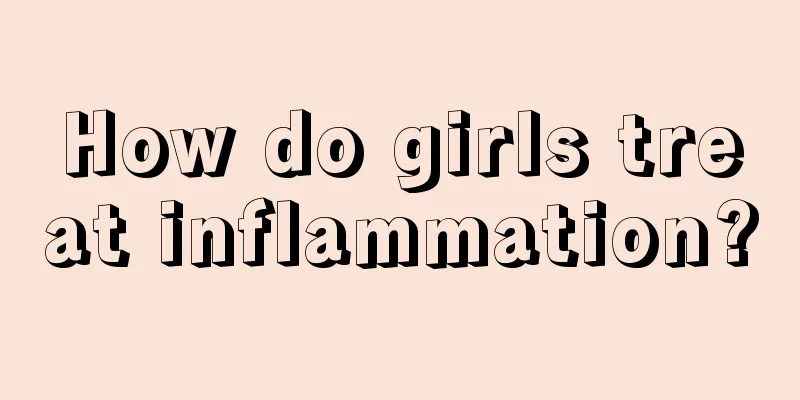Rehabilitation Science: "Runner's Knee" - Iliotibial Band Syndrome (ITBS)

|
“Runner’s Knee” – Iliotibial Band Syndrome (ITBS) Running, as the simplest and most convenient aerobic exercise, is loved by many sports enthusiasts. Whether it is early morning or late night, whether it is a short-distance sprint of 100 or 200 meters, or a long-distance endurance run of 10,000 meters or a marathon, you can see the agile figures of runners. However, some people always find that their knees hurt after running. At this time, you should pause and pay attention to whether you have "runner's knee" . The so-called "runner's knee" usually refers to iliotibial band friction syndrome (ITBS for short) What is Iliotibial Band Syndrome Iliotibial band syndrome is a type of soft tissue around the knee that is more easily injured. Together with patellofemoral pain and tibial plateau stress syndrome, it is collectively referred to as "runner's knee". It is a disease caused by injury or strain of the iliotibial band due to repeated flexion and extension of the knee joint . It is a common sports injury in clinical practice and a common disease among professional athletes and sports enthusiasts. The iliotibial band is located on the outside of the knee and thigh. It is a tendon structure formed by the tensor fasciae latae and gluteus maximus along the thigh. It is also a strong connective tissue connecting the pelvis and lower limbs . The purpose of the iliotibial band is to reduce the pressure of the body weight on the knee joint . Simply put, if there is no iliotibial band pulling on the outside of the thigh, then the weight of the body above the pelvis will be directly transmitted downward through the femur (thigh) without reservation. With the iliotibial band, it is like having a rubber band connecting the outside of the thigh and calf, dispersing the pressure and reducing the burden on the knee joint as much as possible. examine palpation: ①: Pain 2 to 3 cm above the outer side of the knee when flexing and extending the knee joint, aggravated by running, or not accompanied by symptoms such as knee weakness. ②: Check for joint clicking: The patient squats down and checks for any clicking in the knee joint. Noble squeeze test: The patient lies on his back with his knee flexed 90°. The examiner places his thumb 1 to 2 cm above the lateral femoral condyle and passively extends the knee while applying pressure. When the knee is extended close to 30°, if the patient feels severe pain in the lateral epicondyle, it is a positive test. Ober's sign: The patient lies on his side with the healthy side down and the hip and knee flexed. The examiner fixes the pelvis with one hand and holds the ankle of the affected limb with the other hand. After the knee joint is flexed 90°, the thigh is abducted and the affected knee is straightened. The thigh cannot fall naturally and a cord-like object can be felt on the outside of the thigh; or the affected leg is actively adducted and the toes cannot touch the bed surface, which is a positive result. Treatment Ⅰ Acute Phase Management Cool down, immobilize, and control edema and inflammatory response. II. Managing Pain 1. Relax the iliotibial band and surrounding tissues: It can effectively relax tense muscles and quickly relieve pain symptoms; (1) Use soft tissue release techniques to release the tight iliotibial band. (2) Use a foam roller to massage and relax the iliotibial band and lateral knee muscles. Deep relaxation can be performed for 1-2 minutes at the painful point. Side-lying position: Use your upper arm to support your body, relax your leg and straighten it, place the outer thigh on the foam roller, and support the other leg in front. 30-60 seconds/set, 3 times/set. III Physical Factor Therapy Studies have shown that ultrasound therapy can improve motor function and pain in patients after lateral knee injury; shortwave therapy can have anti-inflammatory and analgesic effects; and extracorporeal shock wave therapy can effectively relieve pain in ITBFS patients. IV Orthotic Insoles Orthotics can correct foot posture, improve gait and lower extremity alignment, and reduce tension on the iliotibial band caused by abnormal gait or excessive rotation, thereby relieving pain and preventing symptom recurrence. This intervention helps optimize the patient's mobility and promote long-term recovery. Precautions 1. Progressive training: gradually increase the intensity and distance of running or cycling, and avoid suddenly increasing the training volume. 2. Strengthen core and hip muscle training: improve the stability of the hip joint and knee, and reduce the friction of the iliotibial band. Such as gluteus maximus, gluteus medius and inner thigh muscle strength training. 3. Correct running posture: Maintain a good running posture and avoid running on uneven ground or slopes for a long time. 4. Stretch and relax the iliotibial band: Perform proper stretching before and after exercise to keep the iliotibial band and related muscles flexible. With the improvement of living standards, people are paying more and more attention to foot and ankle diseases. In order to provide the most accurate diagnosis and the best treatment plan, our team's gait analysis laboratory is equipped with the most advanced lower limb biomechanical analysis equipment. ①Mirror pressure test equipment: Mirror pressure test uses the principle of mirror reflection to intuitively observe the plantar pressure, arch type and biomechanical line of the lower limbs. ② Plantar scanning test equipment: Through 3D technology and white light mode projection, a 3D CAD model of the foot can be obtained through reverse engineering processing, which can accurately evaluate the abnormal conditions of the patient's lower limbs and obtain various foot data, such as foot shape, arch index, degree of inversion and valgus, etc. ③ Portable gait analysis equipment: Patients wear insoles equipped with sensors to perform a one-minute walking test, which can not only obtain the spatiotemporal and phase parameters of their walking process , but also obtain dynamic parameters , providing an objective and quantitative scientific basis, reducing the demand for space and manpower, and making gait assessment more efficient. Through these advanced equipment, our team is able to provide each patient with the most accurate diagnosis and the most appropriate treatment plan, helping them recover their health and improve their quality of life as soon as possible. Click on the blue words to follow us If you have any questions about recovery, you are welcome to consult us. Let us move towards a healthy path together!!! |
Recommend
Can a 7-month pregnant woman be induced to labor?
We all know that the country does not advocate ab...
How to install a shoe cabinet when the entrance door faces the living room?
We all know that different house types have diffe...
Daily nutritional recipes for pregnant women
Mothers all know that the diet of pregnant mother...
Women can't sleep at night due to excessive heat
Many people will sweat and feel hot when they res...
National Healthy Lifestyle Action Day丨These 9 seemingly lazy behaviors are actually very healthy!
Today is the National Action Day for Healthy Life...
Tinidazole for gynecological diseases
We must not be careless about diseases such as ad...
How to check follicles
Follicles refer to a normal secretion of women, a...
What is the growth of granulation at the vulva?
Many women are found to have granulations at the ...
Good news for malnourished patients: enteral and parenteral nutrition
Malnutrition is a global health problem, especial...
If the mother has hypothyroidism, will the baby be a boy or a girl?
Hypothyroidism is a disease that has a great impa...
Causes of abdominal distension after abortion
Nowadays, female friends always don’t pay attenti...
How much does hpv typing test cost
HPV is the pathogen that causes cervical cancer. ...
Sweating on the soles of women's feet is dampness
I believe that everyone must be familiar with the...
Is the success rate of pregnancy induction high?
For a woman to successfully conceive, she must pr...
A woman dreams of herself laughing
Laughing is a happy thing. As the saying goes, gi...









